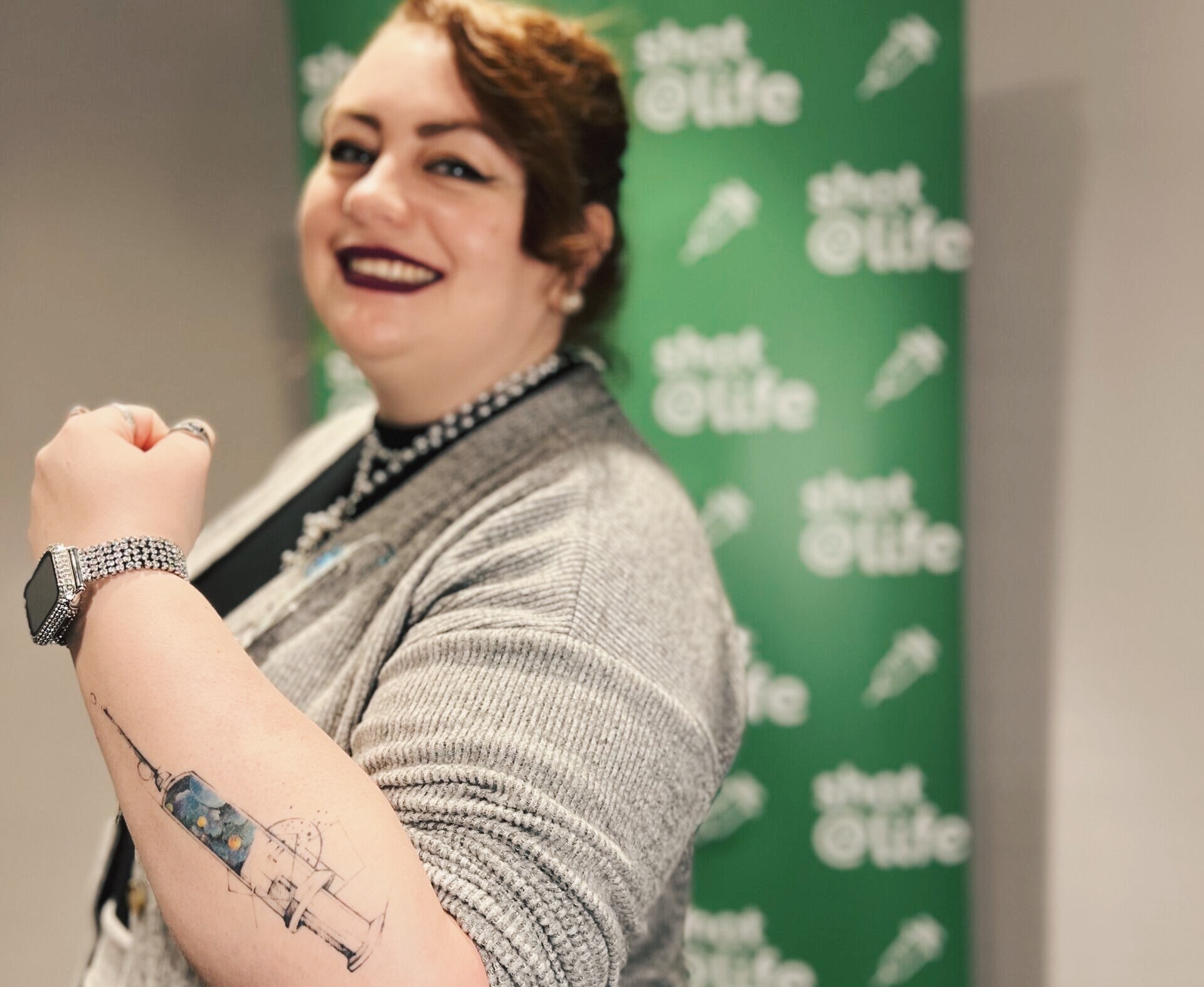Thank You, Thank You!
Project Perpetual
Shot@Life Counts Down to #GivingTueday
Your Flu Shot Was Felt Around the World
60 Vaccines in 60 Days
Get a Shot. Give a Shot.
BLOGUST: Speaking Up on “First” Journeys
#Blogust: Protect. Nurture. Love
Follow us on Instagram
As we near the end of 2025, we celebrate another year of working towards #HealthForAll.
Thank you for all of your hard work to ensure that everyone, everywhere, gets a shot at a healthy life. Happy holidays from the Shot@Life team—we`ll see you in the new year! 💚
Dec 19

The facts are simple: vaccines work. But the reality? Far more complicated.
2025 showed the uncomfortable truth that vaccine breakthroughs aren’t the same as getting them into arms. We watched malaria vaccines roll out across countless new countries while measles cases climbed 34-fold in the Americas.
The bottleneck isn’t science. It’s systems. It’s reaching the last mile, it’s maintaining coverage when funding plateaus or conflicts disrupt supply chains, and it’s instilling trust at the community level.
Keep swiping to see where we stand in the fight against three key diseases this year.
Dec 17

It`s #UHC day.
A new UNAIDS report shows how pandemics and inequality fuel each other in a vicious cycle. Take the COVID-19 pandemic, which raised the debt of low- to middle-income countries to more than $3 trillion.
COVID-19, AIDS, Ebola, and mpox have created a persistent increase in inequality that peaks about 5 years after they conclude.
Reducing inequalities reduces pandemic risk, and health for all means tackling inequity at its roots.
Dec 12

Maternal health is a cornerstone of strong health systems.
Vaccines play a vital role in protecting pregnant women and their babies from preventable diseases, helping ensure healthier beginnings for the next generation. But Universal Health Coverage (#UHC) is needed to ensure these lifesaving services are accessible for all—no matter where families live.
Invest in global health. Feel the pulse of progress.
Dec 9

In places like Afar, health systems have adapted to meet the moment.
The pastoral nature of the region—a population constantly on the move—means that health services need to go mobile.
Even in the face of challenging terrain, harsh weather, and funding shortfalls, the Ethiopian government is bringing lifesaving care to communities in motion.
Dec 4

Measles deaths have dropped 88% since 2000 thanks to lifesaving vaccines—but the virus is surging again. 2024 saw outbreaks in the most countries since the pandemic.
Why? Too many children are missing vaccines. Only 76% received their second dose last year—far below the 95% needed to stop outbreaks.
But there is good news: 96 countries have now eliminated measles. With strong political commitment, sustained financing, and renewed focus on routine immunization and surveillance, the world can get back on track.
Dec 3

Microplastics aren’t just polluting our planet—they’re helping superbugs thrive. These tiny particles create “biofilm hubs” where bacteria share resistance genes, accelerating antimicrobial resistance (AMR).
Two global crises, dangerously intertwined.
For more on where we stand in the fight against AMR, check out our latest blog. #linkinbio
Dec 2

Shot@Life has so much to be grateful for. This includes your dedication to supporting lifesaving immunization programs! Thank you for caring about the health of children everywhere and for your continued support of our campaign’s work to give more of them a shot at life. We couldn’t do it without you.
We hope you and your family enjoy a healthy and happy Thanksgiving!
Nov 27

There’s a new “don’t” when it comes to #AMR prevention…
We don’t need to tell you that pollution is bad. But did you know it plays a role in spreading AMR?
On the heels of #COP30, the spotlight is on the environmental factors amplifying the AMR threat—and microplastic pollution is one of them.
Learn more in our latest blog #linkinbio.
Nov 24

#WorldChildrensDay reminds us that every child—no matter where they live—deserves safety, health, and hope.
Children make up 29% of the world’s total population, but 40% of all forcibly displaced people. And immunization is one of the simplest, most powerful ways to protect them from disease.
Visit shotatlife.org/healthystart to help build a world where every child has access to essential health services.
Nov 20

AMR is already here—and it’s affecting our health, our animals’ health, food systems, and economies. But we are not powerless against this silent pandemic.
Act now: protect our present, secure our future. #WAAW #AMR #AntimicrobialAwareness
Nov 19

The climate crisis is a health crisis.
From extreme heat and air pollution to spreading infectious diseases and rising food and water insecurity, climate change has many impacts on public health.
By 2050, the cost of climate impacts on health in low- and middle-income countries could reach $21 trillion.
Discover 30 numbers that explain the climate crisis: go.undp.org/ClimateCounts
#COP30
Nov 18

Become a Shot@Life Champion
Are you ready to increase your commitment to fight for global vaccine equity? Sign up for an advocacy training and become a Shot@Life Champion!
Join Us
